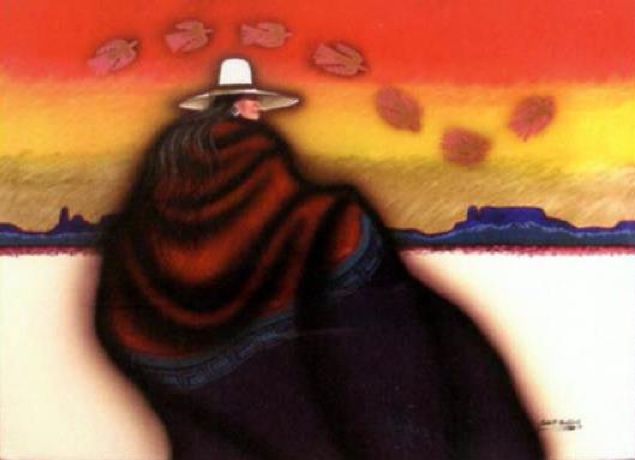 Submitted by Kindred Soul on
Submitted by Kindred Soul on

- O Dom-oye-alm-k' hee, Creater of the earth,
- Bless my prayer and heal our land,
- Increase our food, the buffalo power,
- Multiply my people, prolong their lives on earth,
- Protect us from troubles and sickness,
- That happiness and joy may be ours in life,
- That life we live is so uncertain,
- Consider my supplications with kindness,
- For I talk to you as yet living for my people.
This prayer was last said one hundred twenty seven years ago, in 1887 when the Kiowa people held the last Sun dance, a religious and ceremonial gathering that was the centeral feature of Kiowa life for hundreds of years. The last century has brought great changes for the Kiowa.
The Sun Dance was the most important religious ceremony for the Kiowa, as it was for many other plains Indian People. It was not a ceremony worshiping the sun, but rather derived its name from the practice of gazing upward into the sun. It has also been called the Medicine Dance, because of the ceremonial significance of the event. The Sun Dance was usually held once a year during the summer, usually around the time of the summer soltice, and provided a time not only for ceremonial and religious celebration, but also for gathering of the tribe and sharing of news, as well as individual healing and self-renewal.
The Tai-me Keeper or priest played a central role in the Sun Dance, from deciding—based on inspiration received in a dream - whether the ceremony would be held leading to the preparations. The Tai-me was a small decorated stone figure covered with ermine and feathers. The Kiowa received their first Tai-me figure from an Arapaho man who married into the Kiowa tribe. The Arapaho had originally obtained a Tai-me figure from the Crow Indians during their Sun Dance.
Originally, the Kiowa Sun Dance celebration lasted for about ten days, with six days of preparation, followed by four dancing days. The celebration followed a strict pattern of rituals on each of the ten days. On the dancing days, the dance began at sunrise and the dancer's family selected an artist to paint designs on the dancer's body. Following prayers and ceremonial smokes, the dance continued throughout the day. During the four dancing days, spectators and singers were allowed to leave at midnight, but the dancers were required to remain in the sweat lodge without food or water. The only relief the dancers could receive from the heat of the day were waterlillies to cool their heads and traditional ceremonial food. The Tai-me keeper would also fan the dancers. At certain times dancers would fall unconscious and experience visions. Unlike Sun Dances of other tribes, such as the Sioux, the Kiowa never pierced their skin or shed blood in any way during the ceremony. For them, this was considered taboo and would bring misfortune upon the Kiowa People.
While the Sun Dance ceremonies were eventually banned by the United States government at the end of the nineteenth century, and the dance itself is no longer performed today, it still impacts Kiowa life. For example, the ten Kiowa Tah-lee Medicine bundles, which played a central role in the Sun Dance purification rituals are still cared for by tribal members charged with their safe protection. Purification through the use of the sweat lodge continues to this day. Other cultural activities such as the Warrior Society dances and the varied songs and music of the Kiowa have also been maintained.
https://www.newworldencyclopedia.org/entry/Kiowa
http://http://creativecommons.org/licenses/by-sa/3.0/
- 1546 reads